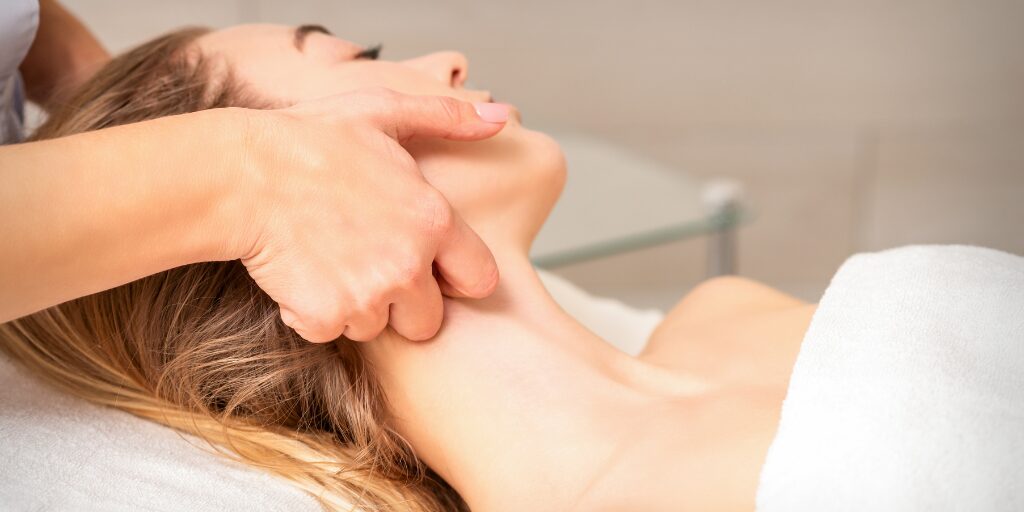Lymphatic drainage has recently gained popularity as a go-to self-care practice, and for good reason. This gentle technique helps the body eliminate excess fluid, reduces swelling, and supports overall wellness. With its rising trend among health enthusiasts, it’s time to explore what lymphatic drainage is all about and why it might just be the self-care flex you need in your routine.
Key Takeaways
- Lymphatic drainage helps remove excess fluid and waste from the body, improving overall health.
- It can reduce swelling and inflammation, making it beneficial after surgeries or injuries.
- Regular lymphatic drainage can enhance skin health, promoting a clearer and more vibrant complexion.
- There are various methods for lymphatic drainage, including professional massages and at-home techniques.
- Incorporating lymphatic drainage into your routine can support your immune system and boost your self-care efforts.
What is Lymphatic Drainage?
Okay, so you’ve probably heard the buzz about lymphatic drainage, but what is it, really? It’s not just some fancy spa treatment; it’s actually about supporting a super important system in your body: the lymphatic system. Think of it as your body’s internal sanitation department. It’s a network of tissues and organs that help to get rid of waste, toxins, and other unwanted materials. It’s like the unsung hero that keeps everything running smoothly.
Your lymphatic system plays a big role in your immune system. It transports lymph, a fluid containing infection-fighting white blood cells, throughout your body. When your lymphatic system is working well, it helps you stay healthy by clearing out the gunk that can make you feel sluggish or even sick. But sometimes, it needs a little help, and that’s where lymphatic drainage comes in.
Lymphatic drainage is all about encouraging the natural flow of lymph. When the lymphatic system gets sluggish, fluid can build up, leading to swelling and a whole host of other issues. By using specific techniques, like massage or even dry brushing, you can help to stimulate the lymphatic system and get things moving again. It’s like jump-starting your body’s natural detox process.
It’s important because the lymphatic system doesn’t have its own pump, unlike your circulatory system with the heart. It relies on muscle contractions, movement, and manual techniques to keep things flowing. So, giving it a little boost can make a big difference in how you feel. Think of lymphatic drainage as giving your body’s sanitation workers a helping hand to keep the streets clean and clear. It’s all about supporting your body’s natural ability to heal and stay healthy.
The Benefits of Lymphatic Drainage
Okay, so why is everyone suddenly obsessed with lymphatic drainage? It’s not just a trend; there are some real benefits to getting your lymph flowing. Think of it as spring cleaning for your body. When your lymphatic system is working well, it helps keep everything running smoothly. Let’s get into the specifics.
Improved Immune Function
Your lymphatic system is a HUGE part of your immune system. It’s like the body’s filtration system, carrying waste and toxins away from your cells. When the lymphatic system is sluggish, those toxins can build up, potentially weakening your immune defenses. Regular lymphatic drainage can help boost your immune system by ensuring that waste is removed efficiently, allowing your immune cells to function at their best. It’s like clearing the road for the immune cells to get where they need to go, faster and more effectively.
Reduced Swelling and Inflammation
Ever wake up with a puffy face or feel bloated after a salty meal? That’s often due to fluid retention, which the lymphatic system helps manage. Lymphatic drainage massage can help reduce swelling and inflammation by encouraging the movement of fluids out of tissues and back into circulation. This can be especially helpful for people who experience lymphedema (swelling due to a blockage in the lymphatic system) or those recovering from surgery. Think of it as gently coaxing excess fluid away from areas where it’s accumulated, bringing relief and comfort.
Enhanced Skin Health
Believe it or not, lymphatic drainage can also do wonders for your skin. By removing toxins and reducing inflammation, it can help improve skin clarity and radiance. When the lymphatic system is working efficiently, it helps deliver nutrients to skin cells and remove waste products that can contribute to acne, dullness, and other skin issues. Some people even find that it helps reduce the appearance of cellulite by improving circulation and reducing fluid retention in the affected areas. It’s like giving your skin a detoxifying facial from the inside out.
How Lymphatic Drainage Works
Okay, so how does this whole lymphatic drainage thing actually work? It’s not like your blood, which has the heart to pump it around. The lymphatic system is a bit more…chill. It relies on you to keep things moving. Think of it like a stream that needs a little nudge to keep flowing smoothly.
Basically, the lymphatic system is a network of vessels and nodes that run throughout your body. Its main job is to collect waste, toxins, and excess fluid from your tissues. This fluid, called lymph, then travels through the lymphatic vessels to the lymph nodes, which act like filters. Inside the lymph nodes, immune cells attack any harmful substances, like bacteria or viruses. The cleaned lymph then returns to your bloodstream.
So, what gets things moving? Well, a few things:
- Muscle contractions: When you move your body, your muscles squeeze the lymphatic vessels, helping to push the lymph along. This is why exercise and even just regular movement are so important for lymphatic health.
- Breathing: Deep, diaphragmatic breathing creates pressure changes in your abdomen that help to stimulate lymphatic flow. So, take a deep breath – you’re helping your lymphatic system!
- Manual stimulation: This is where lymphatic drainage massage comes in. Gentle, rhythmic movements can help to manually stimulate the lymphatic vessels and encourage the flow of lymph. It’s like giving your lymphatic system a little jumpstart.
If your lymphatic system gets sluggish, fluid can build up in your tissues, leading to swelling, fatigue, and a weakened immune system. That’s why keeping things flowing is so important. Think of it as clearing the clutter in your body’s basement – you want to keep things tidy and efficient!
Different Methods of Lymphatic Drainage
Okay, so you’re intrigued by lymphatic drainage, right? Good! Now, let’s talk about how you can actually do it. There are a few different ways to approach this, ranging from professional treatments to things you can try at home. It’s not a one-size-fits-all kind of deal, so finding what works best for you is key.
Manual Lymphatic Drainage (MLD)
This is the OG, the classic. Manual Lymphatic Drainage techniques is a specialized massage performed by a trained therapist. They use very light pressure and specific, rhythmic strokes to stimulate the flow of lymph. It’s not like a regular massage where they’re digging into your muscles; it’s much more gentle. There are different schools of thought within MLD, like the Vodder, Földi, Leduc, and Casley-Smith methods. Each has its own nuances, but the goal is the same: to encourage lymph flow. MLD is often recommended as part of Complete Decongestive Therapy (CDT), especially for lymphedema management. Finding a certified therapist is super important here, because the technique is pretty precise.
Lymphatic Drainage Massage Techniques
Beyond MLD, there are other massage techniques that can help with lymphatic drainage. Some spas and massage centers offer lymphatic massage, but it’s important to make sure the therapist has specific training in this area. It’s not just about rubbing some oil on your skin; it’s about understanding the lymphatic system and how to encourage drainage. These massages can help clear out damaged cells, waste, and fluids, improving overall circulation. Integrating drainage massages with other recovery methods can be very helpful during the recovery process.
At-Home Lymphatic Drainage Practices
Don’t have the time or budget for regular professional treatments? No problem! There are things you can do at home to support your lymphatic system. Dry brushing is a popular one – using a soft-bristled brush to gently brush your skin in the direction of your lymph nodes. You can also try self-massage techniques, focusing on light, gentle strokes. Movement and stretching can also help. The key is to be consistent and gentle. You can even find special Lymphatic Brushes that are designed for this purpose. Just remember to do your research and listen to your body. If something feels painful, stop! Light self-massage can also aid the healing process.
Who Can Benefit from Lymphatic Drainage?
Okay, so who exactly should be thinking about lymphatic drainage? Honestly, it’s pretty versatile. If you’re dealing with fluid retention, feeling sluggish, or just want to give your immune system a little boost, it might be for you.
Think about it: our lymphatic system is like the body’s waste disposal service. When it gets backed up, things get…icky. Lymphatic drainage helps get things moving again.
- Post-Surgery Patients: Recovering from surgery? Lymphatic drainage massage can help reduce swelling and speed up healing. It’s especially common after cosmetic procedures like liposuction.
- People with Lymphedema: This is a big one. Lymphedema causes fluid buildup, usually in the arms or legs. Lymphatic drainage can provide significant relief.
- Those with Autoimmune Conditions: Since the lymphatic system plays a key role in immunity, supporting it can be beneficial if you have an autoimmune disorder.
- Anyone Feeling Bloated or Sluggish: Sometimes, we just feel…blah. If you’re retaining water or feeling like your body needs a detox, lymphatic drainage might help you feel lighter and more energized.
It’s not a magic bullet, but it can be a really helpful tool for a lot of people. Always chat with your doctor or a qualified therapist before starting any new treatment, especially if you have underlying health conditions. They can help you figure out if it’s right for you and how to do it safely.
Incorporating Lymphatic Drainage into Your Self-Care Routine
Okay, so you’re sold on lymphatic drainage. Now, how do you actually make it a regular thing? It’s easier than you think! It’s all about finding small ways to weave it into your existing self-care habits. Think of it as an upgrade, not a complete overhaul.
Here’s the deal: consistency is key. You don’t need to spend hours every day. Even a few minutes of focused attention can make a difference. The goal is to gently encourage your lymphatic system to do its thing, clearing out the gunk and keeping things flowing smoothly. So, let’s look at some ways to make this happen.
Conclusion: Embracing Lymphatic Drainage as a Self-Care Essential
So, you’ve made it this far, and hopefully, you’re starting to see why lymphatic drainage is more than just a fleeting trend. It’s a real deal self-care practice that can seriously impact how you feel, both inside and out. Think of it as spring cleaning for your body’s internal systems. It’s about clearing out the gunk, reducing inflammation, and giving your immune system a boost.
It’s not about quick fixes or overnight transformations. It’s about consistently incorporating practices that support your body’s natural detoxification processes. Whether it’s a quick dry brushing session before your shower, a monthly massage, or simply being more mindful of your breathing, every little bit counts.
And honestly, in a world that’s constantly throwing toxins and stressors our way, giving your lymphatic system some extra love is a pretty smart move. So, why not make lymphatic drainage a regular part of your self-care routine? Your body will thank you for it. It’s a small investment that can pay off big time in terms of your overall health and well-being. Think of it as a way to cultivate a compassionate relationship with yourself. You deserve it!
Wrapping It Up: Why You Should Try Lymphatic Drainage
So, there you have it. Lymphatic drainage is more than just a trendy self-care move; it’s a practical way to boost your health and well-being. Whether you’re dealing with puffiness, looking to improve your skin, or just want to feel lighter, this technique can help. Plus, it’s super easy to add to your routine, especially with tools like lymphatic brushes. Just a few minutes a day can make a difference. So why not give it a shot? Your body will thank you, and you might just find a new favorite self-care ritual.
Frequently Asked Questions
What is lymphatic drainage?
Lymphatic drainage is a gentle massage technique that helps move lymph fluid in the body. This fluid carries waste and toxins away from the tissues, helping to keep your body clean and healthy.
How does lymphatic drainage benefit me?
It can improve your immune system, reduce swelling and inflammation, and even make your skin look better by helping to remove toxins.
Who can benefit from lymphatic drainage?
Almost anyone can benefit! It’s especially helpful for people who have swelling, are recovering from surgery, or want to boost their overall health.
Can I perform lymphatic drainage on myself?
Yes, you can! There are simple techniques you can learn to do at home. However, it’s best to get guidance from a trained therapist first.
What methods are used for lymphatic drainage?
There are a few methods, including manual lymphatic drainage done by a therapist, specialized machines, and self-massage techniques.
How often should I get lymphatic drainage?
It depends on your needs, but many people find that regular sessions, like once a week or every few weeks, work well for them.
Is lymphatic drainage painful?
No, it should not be painful. The massage uses a light touch, which makes it relaxing and gentle.
What should I do after a lymphatic drainage session?
It’s important to drink plenty of water to help flush out the toxins that were released during the massage. You might also want to rest and allow your body to recover.




